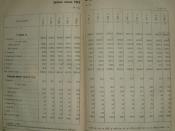There are many ways a corporation can be classified; however the best way to classify a corporation is by knowing the characteristics that makes a corporation. The unique characteristics of corporations are consist of limited liability of stockholders, free transferability of shares, perpetual existence, and centralized management. In relation to John Marshall who is the ÃÂchief justice in 1819 defined corporation as an artificial being, invisible, intangible, and existing only in contemplation of law in which the entity separate and distinct from its owners.ÃÂ (Weygandt, 2005, p. 527) Since, ÃÂa corporation is a legal entity; it can sell shares of ownership which is referred to as stock without affecting its operations.ÃÂ (Warren, 2002, p. 476) Also a ÃÂcorporations are liable for their own contracts and debts in which share holders have limited liability.ÃÂ (Cheeseman, 2004, p. 675) According to Henry Cheeseman ÃÂbecause corporation cannot be put in prison, the normal criminal penalty is the assessment of a fine, loss of a license, or other sanction.ÃÂ
(Cheeseman, 2004, p. 675) In the second characteristics free transferability of shares are ÃÂfreely transferable by the shareholders by sale, assignment, pledge, or gift in which the shareholders agree among themselves on restrictions on the transfer of shares.ÃÂ (Cheeseman, 2004, p. 675) The third characteristics is refer to as perpetual existence in which ÃÂcorporations exist in perpetuity unless a specific duration is stated in the corporations articles of incorporation, or the corporations may be involuntarily terminated by the corporationÃÂs creditors if an bankruptcy against the corporation is granted.ÃÂ (Cheeseman, 2004, p. 675) The last characteristics of a corporation are centralized management in which ÃÂthe board of directors makes a policy decisions concerning the operation of the corporation.ÃÂ (Chesseman, 2004, p. 675) In accordance of Carl Warren, James Reeve, and Philip Fess the organizational structure...


